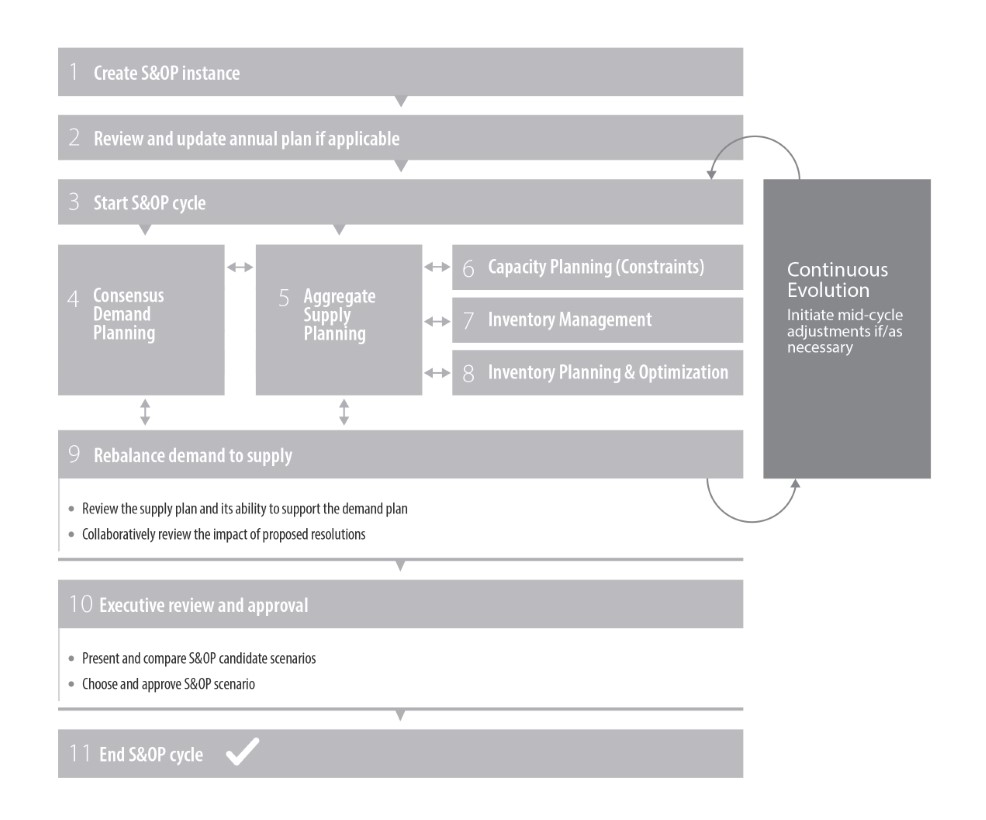
Life doesn’t occur at a steady pace. We have all experienced that firsthand over the past few months. The waves of activity that ebb and flow happen both in our personal lives and in business. The market adjustments, economic uncertainty and constant change we face have had a significant impact on our supply chains. There is no such thing as a new normal. Demand patterns aren’t predictable, market shifts are hard to forecast and the gap between expected and actual results has widened. Planning and execution are now harder than ever.
As a result, previous supply chain best practices are no longer applicable. As business leaders, we must be ready for the extensive atypical conditions we will likely encounter on a continual basis because exceptions will be less exceptional. This readiness will ensure we can mitigate risk, drive resiliency across the organization, differentiate ourselves from competitors and ultimately ensure that the supply chain — the last touch point before the customer — enables a positive and memorable experience for them.
While that may sound like embarking on the impossible, it doesn’t have to be. It will, however, take a shift in mindset, prioritization and action planning.
S&OP: Synchronizing each supply chain function
I’m reminded of an analogy described by one of my management science graduate school professors. Consider the way an emergency room operates. To be effective, the entire emergency response system must continuously consider the way the parts work together. No one debates. Everyone understands their roles, and with strong communication, treatment moves quickly, more patients can be cared for and valuable moments can be saved. The smooth operation of this complex system depends on the constant and transparent flow of information. A delay in one part of the process can significantly and negatively impact the patient.
In a supply chain environment, the same rules should apply. Each function of the supply chain needs to operate in a synchronized fashion with transparency and speed. A robust sales and operations planning (S&OP) process can make this happen. Unfortunately, for many organizations, this practice has slipped or was never fully realized. According to Lora Cecere, founder of Supply Chain Insights, companies are getting worse, not better at managing their S&OP processes.
Cecere equates this slip to businesses lacking focus on the basics: clarity of strategy, discipline, focus on the right functions and strength in planning. She also believes an important element of these basics should include cross-department collaboration. She writes, “In successful S&OP processes, leaders work to improve alignment between functions.” I fundamentally believe this alignment is key to advancing your strategic business planning, and in concert with the right sales and operations execution (S&OE) strategy, can drive the necessary agility.
At its core, S&OP is a process designed to help you maximize revenue and market share, align budgets, and minimize costs and risks — both in the long and short terms. By looking ahead, leadership works within the framework to align business goals and objectives. Yet, often this S&OP process proves ineffective because it is disconnected from the actual running of the business. The data and business assumptions are often stale and can perpetuate poor information on which critical decisions are made. Furthermore, the bottoms-up aggregation of this information for presentation to top executives often provides limited feedback down the chain before the start of the next cycle.
As in the emergency room, for S&OP to be effective across the supply chain, silos must be connected and a robust feedback loop needs to be implemented to make sure you’re creating comprehensive plans that will achieve business goals, avoid surprises and deliver the best customer experience — quickly and consistently.
S&OE: Aligning execution with long-term plans
But S&OP alone isn’t enough. As global supply chains are transforming into more sophisticated global supply networks, execution often becomes a stumbling block. Because as much as you focus on a well-conceived plan, if you don’t effectively put that plan into action in a timely manner and aren’t agile in responding to the inevitable disruptions, you can expect trouble to occur.
Where S&OP drives long-term organizational plans, S&OE focuses on a much more immediate time frame: the agility of continual adjustments required to safeguard against demand and supply fluctuations inherent in the execution of any tactical plan. Continuous adjustments mid-cycle, if necessary, allow for effective rebalancing of supply in support of an evolving demand plan. Often, these adjustments help prevent overreactions to small disruptions, rather than radically changing course each time the demand dial moves. In this way, S&OE aids S&OP functionality by delivering the agility required to drive plans and associated initiatives through their various phases.
However, integrating these two processes is easier said than done without the right tools. Supply chain planners using Excel or similar means to create operational roadmaps have limited visibility and often significant latency of information into what has really taken place across the nodes of the supply chain. Access to real-time information with concurrent planning capabilities gives planners visibility into the end-to-end supply chain and transparency into the impact of their potential plans. This allows them to develop cross-functional alignment in the short term, increasing clarity into root causes and accelerating operational decision-making.
S&OE can not only reduce volatility, but also add significant agility to the S&OP cycle. With the two processes working in concert, businesses can develop more accurate demand forecasts, automate workflow improvements, reduce downtime and even automate inventory replenishments. Closing the gap between planning and execution in this way, businesses stand to gain a significant competitive advantage in a world where disruption is constant.

S&OP + S&OE: Continuous evolution and agility
When I speak with supply chain leaders on the effectiveness of supply chain planning, execution and agility, I find that many are confused and frustrated about how to effectively adapt to today’s ever-shifting business conditions. They want the ability to deliver on their brand promise, ensure customer centricity and provide the very best experience to the market. They know that as the last touch point to the customer, the supply chain can be detrimental to the long-term success of the business or help it achieve new highs of customer satisfaction and corporate profitability. Planning and executing successfully can deliver those moments of truth where they make or break a customer relationship.
What I tell leaders is that adopting a distinct S&OP process that breaks down silos and allows them to more dynamically adapt to change in a fluid environment can make or break their business. Adding S&OE to the mix is worth the investment of time and resources because together with S&OP, it can result in greater agility across the supply chain, more controlled costs, higher profitability and more strategic alignment across all business functions.
A well-designed and orchestrated supply chain strategy that combines S&OP and S&OE should be at the heart of the business. It can be the difference between drowning in change or bouncing back from adversity.
Additional Resources
- S&OP frequently asked questions





